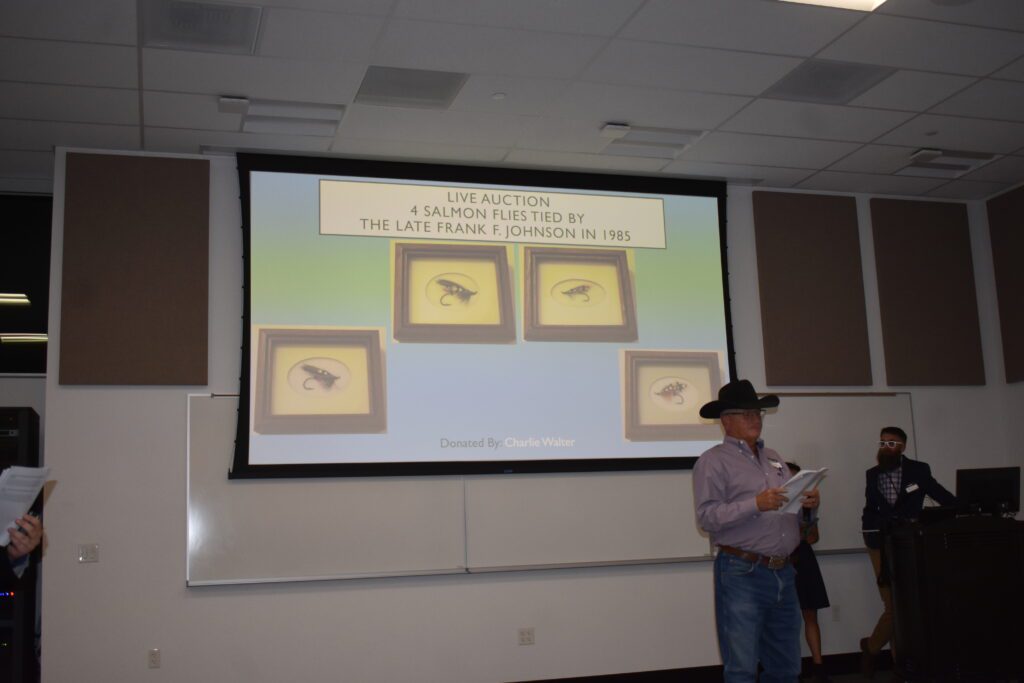News
Audience Hears about Mule Deer Migration at SCLT Fundraiser


Published
1 year agoon
By
cvannoy
The third annual SCLT In-Bloom Fundraiser was held on September 9 at the Whitney Center for the Arts at Sheridan College. Brad Bauer, Executive Director of SCLT, thanked Sheridan Media and the other sponsors and talked about the speaker this year
This fits into what SCLT has been working on which is wildlife friendly fencing.
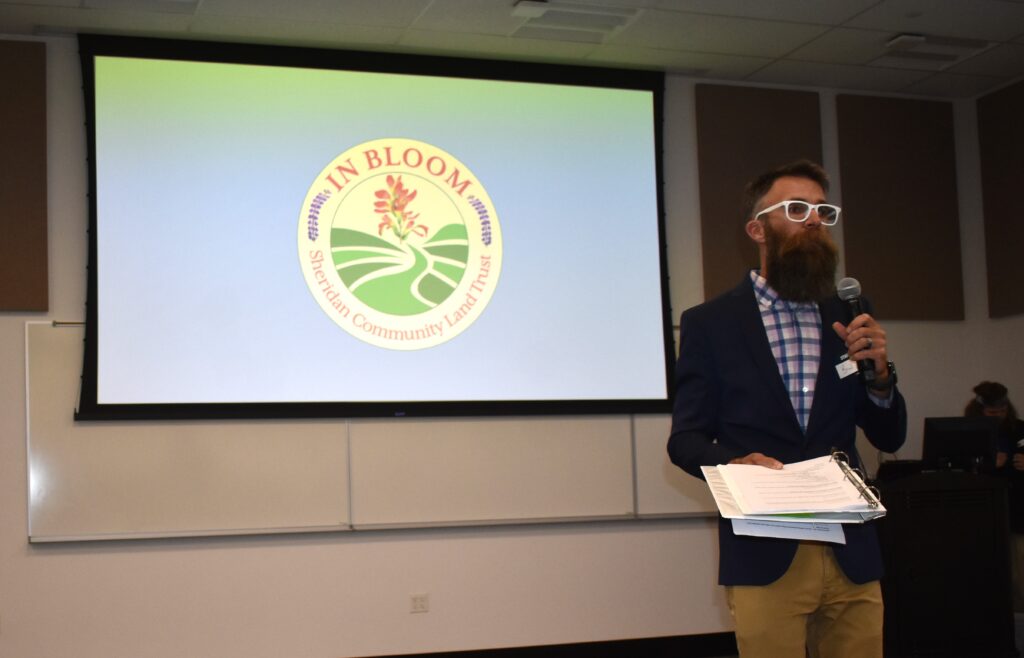
The speaker for the 2023 In Bloom was Dr. Matt Kauffman, the lead scientist and co-founder of the Wyoming Migration Initiative. Kauffman has been with the University of Wyoming for 17 years, and he is also a federal scientist.
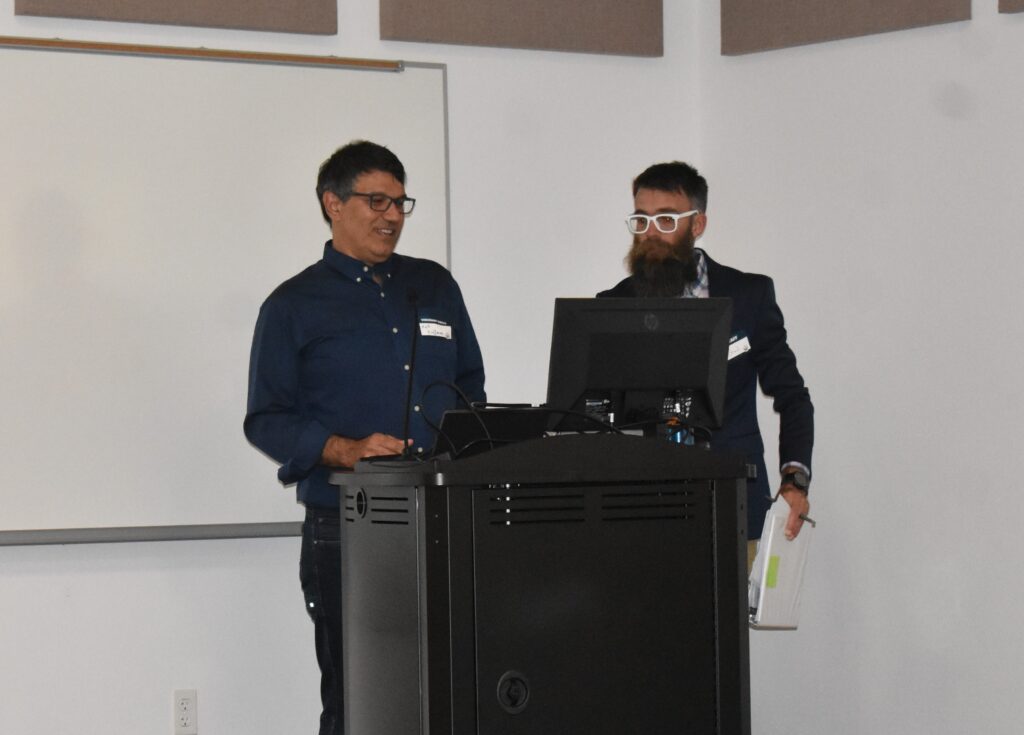
He spoke about the long-distance migrations and conservation of mule deer, elk, pronghorn, and moose. He said that although there was a die-off in many areas last winter, he said that wouldn’t affect the migration as there would be enough individuals left to continue to migrate.
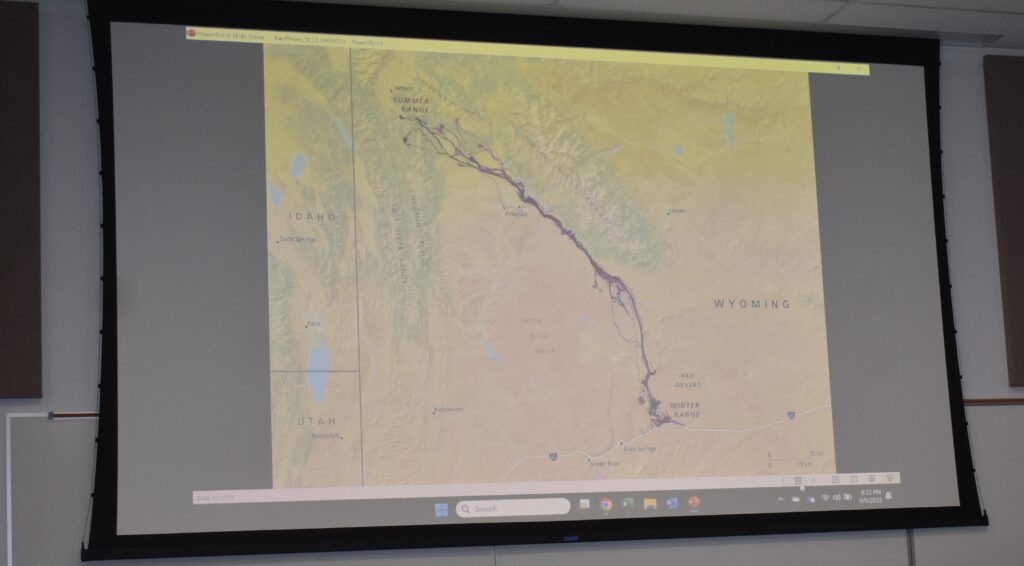
He said although whitetail do migrate, they usually don’t migrate as far as mule deer.
When asked how far mule deer migrate, Kauffman said,
He showed a photo of pronghorn running and said that most people think that migrating animals just start moving and don’t stop until they get to their destination.
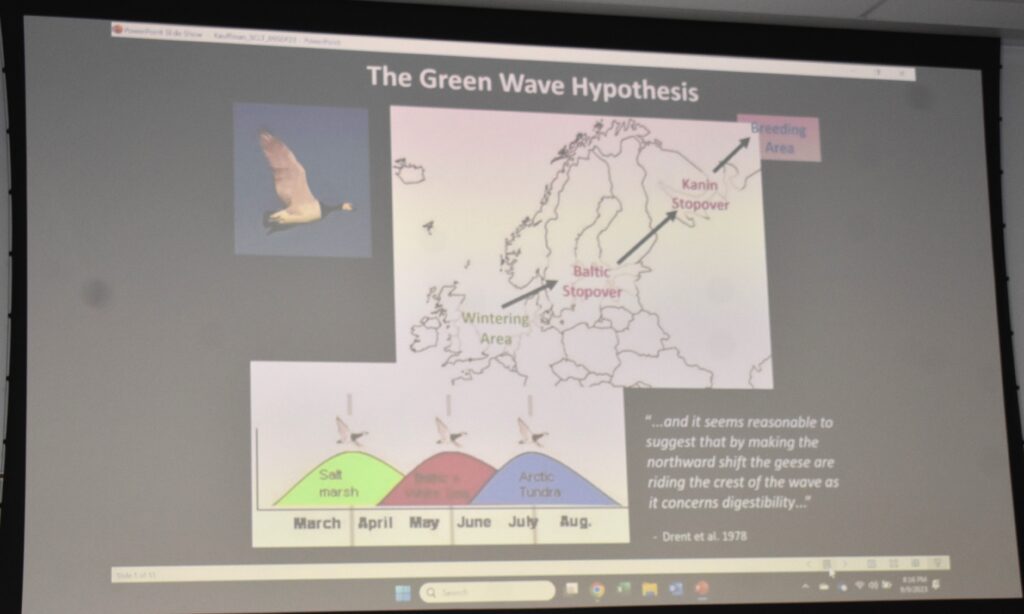
This is not always the case. They have radio-collared several mule deer, and by following these deer the scientists discovered that the mule deer dawdle on the migration, following the plant growth to maintain or put on weight, by eating the young, green grass. Sometimes the deer hardly seem to be moving at all as they graze along. He called it ‘surfing the green wave.”
He said they had studied the mule deer migrating from the winter range in the Red Desert area up to Hoback near Jackson for the summer. He added that the deer who migrated all the way north to Hoback had more body fat than those that did not migrate but summered in the Red Desert.
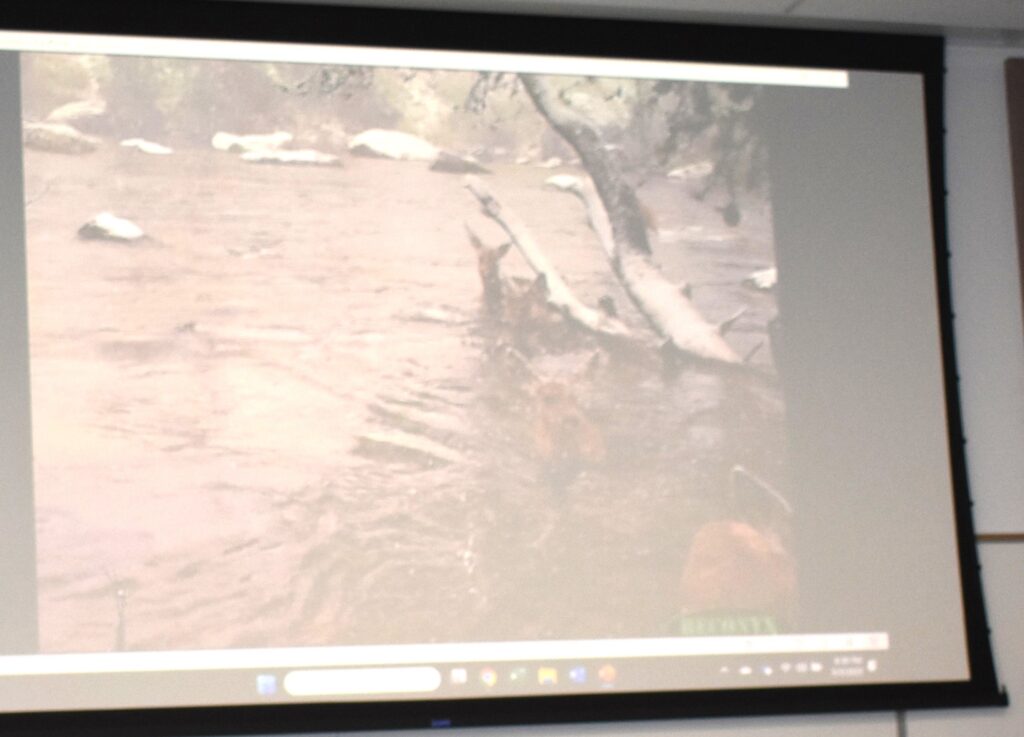
He said that the deer migration fell into three categories, all the way to Hoback, some stopped midway between the two ranges, and some choose to stay in the desert. Except for the aforementioned deer #255

But her collar failed, and they lost track of her for a time. Most of the new collars were white, but in March of 2018, back in the red desert,
Kauffman continued, “So, she’s got a brand-new collar on, and
He said that they have tried to catch her fawns but have not been able to find out if her fawns continue Deer #255’s migration route.
He also talked about how the animals knew where to go. Some is innate, a genetic program in their genes, and some of it is learned from parents or members of the group. He said that most of the migration in mammals is learned behavior.
He talked about some areas where the animals had a bottle neck, making it difficult to cross during the migration, and what they are doing to open these area’s up. An over-pass was built over I-80 near Pinedale, and the purchase of an important tract of private land to keep it free for wildlife, rather than developing it.
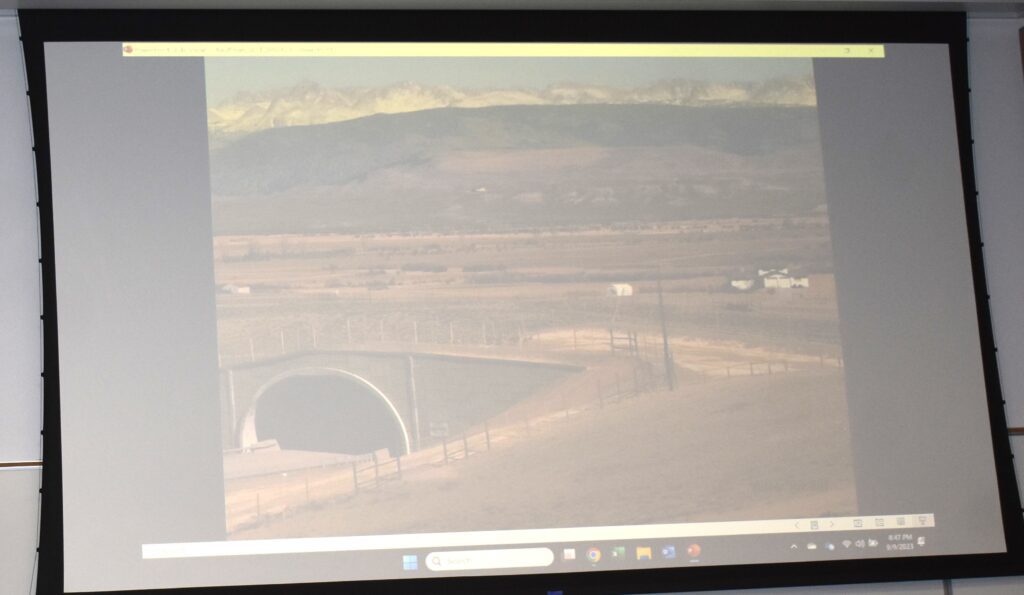
The evening included a live & silent auction featuring many items such as a polo package, and tickets to Antelope Butte Ski area. Roger St. Clair helped with the auction duties, and a set of framed, hand-tied salmon flies generated over $800 for the SCLT. It also included a paddle raise, where people could raise their bid numbers to support SCLT with various dollar amounts.
